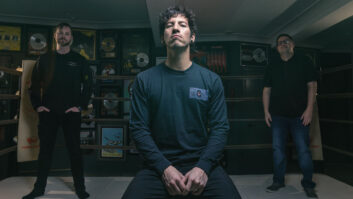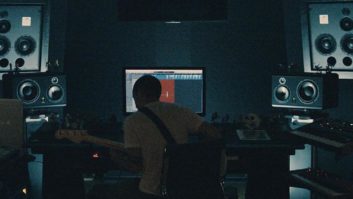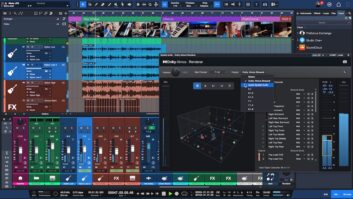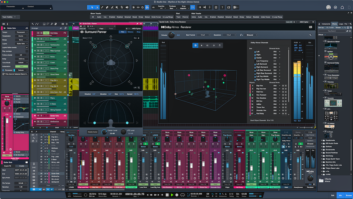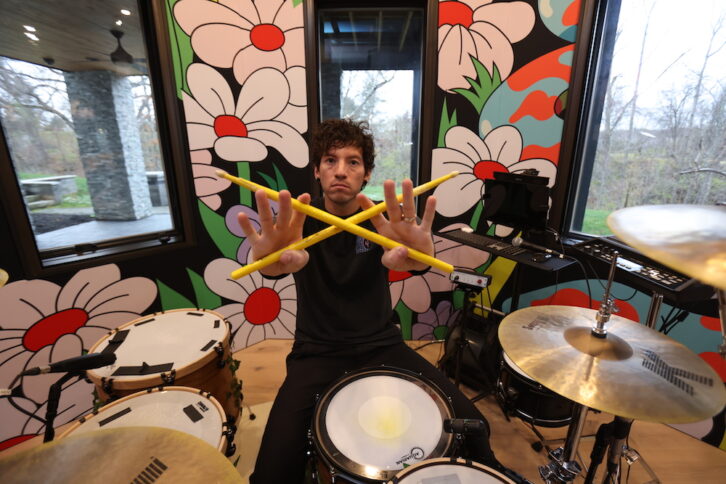
Ever since its 2015 breakthrough album Blurryface, Twenty One Pilots has been flying high with a string of platinum-selling albums and worldwide arena tours. There’s no knowing when the creative urge will strike, however, so both drummer Josh Dun and lead vocalist and multi-instrumentalist Tyler Joseph have home studios. Don’t pass up Part 1, which explores how Dun worked with Charlie Griffey of Griffey Remodeling, Josh Dun, TJ Bechill of NEAT Audio, and Gavin Haverstick of Haverstick Designs to create his ideal home facility, The Boom Boom Room; now let’s dive into how he puts the studio to good use.
SETTING UP TO RECORD
“Tyler and Josh don’t work with engineers; they work by themselves,” Bechill observes, noting that during his technical design process, he likes to understand an artist’s workflow and what tools they need. “I always build around the concept of the artist being able to walk into a room and ‘put pen to paper’ as quickly as possible.”
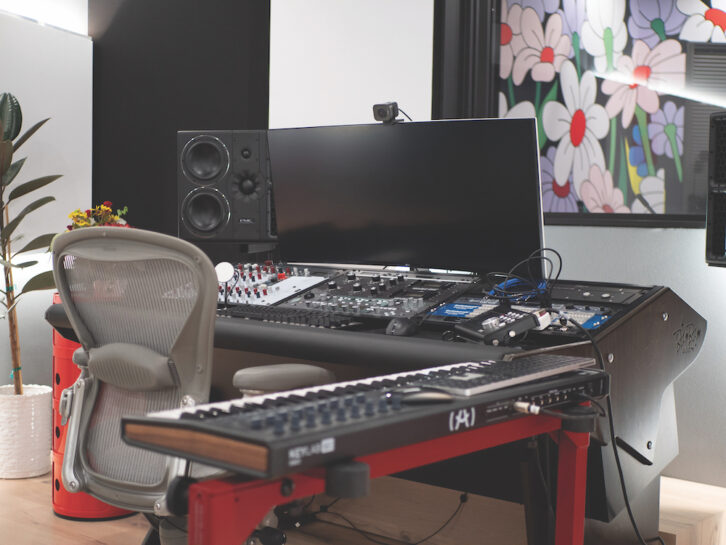
Bechill quizzed Dun about the favorite drum tones he had recorded in his favorite rooms before deciding what gear to load into the control room’s Dangerfox desk. “A lot of them featured vintage Neve consoles,” he recalls. “Josh has API and Audient pre’s in his studio in California, and he said, ‘I want transparency, but I also love the vintage vibe of a Neve console and the glue that you get from the transformers.’”
The desk’s lefthand bay houses two Rupert Neve Designs 500 Series racks holding 14 of the manufacturer’s 511 mic pre modules, with variable Silk control. “The Coles 4038 overhead mics go into a pair of 517 preamps, into 1176s and then into the converters,” he adds.
Mike Picotte, senior sales engineer, artist relations at Sweetwater, also consulted on gear choices, then tuned the control room with Smaart and optimized the DSP on the room’s PMC 6-2 main monitors. “PMC checked all the boxes and has been an incredible system,” Bechill says. “We don’t really mix in there, but we wanted an accurate reference. You can do multiple EQ settings, so we created two zones—one for the mix position and a second for the couch, if friends come in to listen to music.”
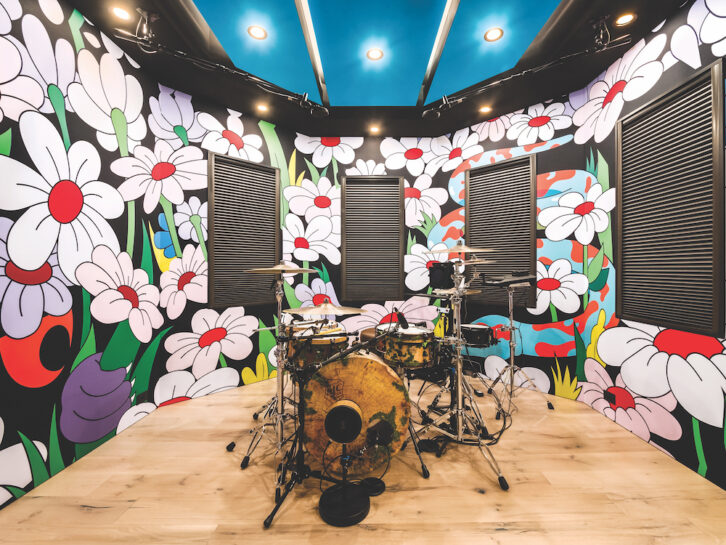
Picotte also dialed in the drum sounds. “After 15 minutes, Mike leans back and says, ‘Well, there you go,’” Bechill recalls. “There’s no processing on the tracks; it’s just a great room, great microphones, and solid preamps and conversion, so we saved it as a template. We’ve got a Furman sequencer, so now Josh walks in, turns one key and the whole studio turns on. Within seconds, he can press Record and sit down and play.”
Sweetwater sales engineer Jon Krempel supplied much of the equipment and, with fellow sales engineer Patrick Cobley, helped wire and solder all the cables in the studio during the two-day installation. Ryan’s brother, Chase, who works on the video side, designed the audio patchbay. “I love having a normalized patchbay where I don’t have to use cables if I don’t need to,” Bechill comments.
Speaking of patching, Bechill installed a dedicated Rupert Neve Designs Shelford Channel for Ryan’s voice work so that she didn’t have to disturb Dun’s signal flow. “She’s an absolute professional, but I wanted a channel strip so we could give her dynamic control in case she got too animated or too close to the mic. I really like the FET-style compressor in the Shelford, and I’ve always loved 1073-esque tones.”
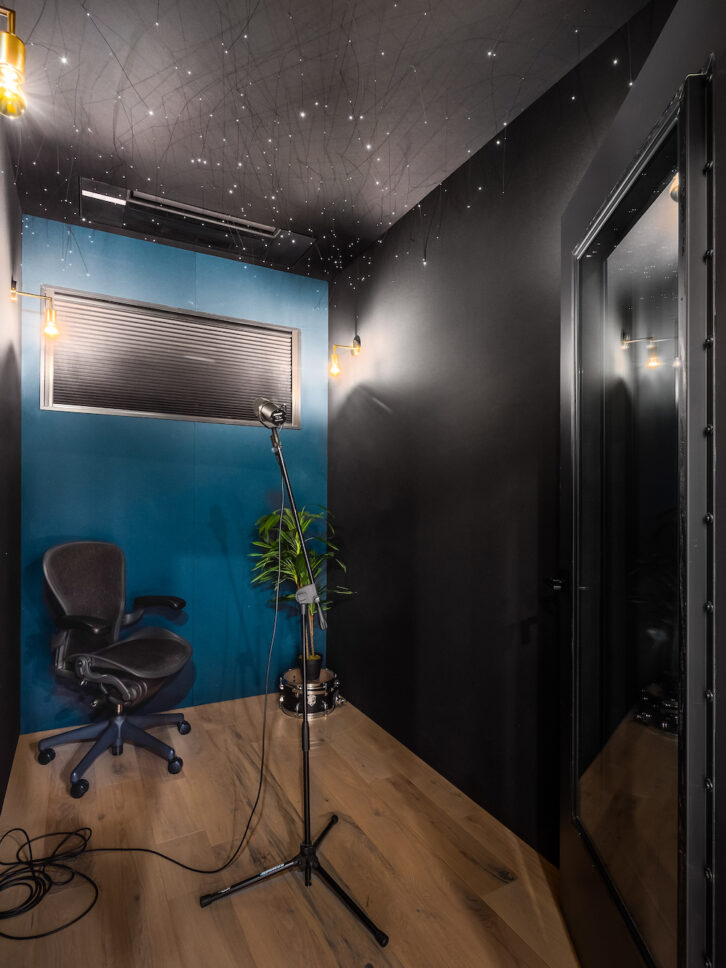
Haverstick included a small vocal booth in the studio layout, which doubles as an amp closet for visiting guitarists, but Ryan can also take a shotgun or a lav mic into the live room: “She can do ADR in that room if her producers don’t want a completely sterile vocal booth environment.”
TRACKING DRUMS
The tracking space, a room-within-a-room design, looks out onto the woods surrounding the house and features a floating floor. Although Dun has tracked in big rooms like EastWest in Hollywood, Haverstick says, “He wanted a controlled but not too dead-sounding live room, because Twenty One Pilots do get more of a controlled sound on their drums.”
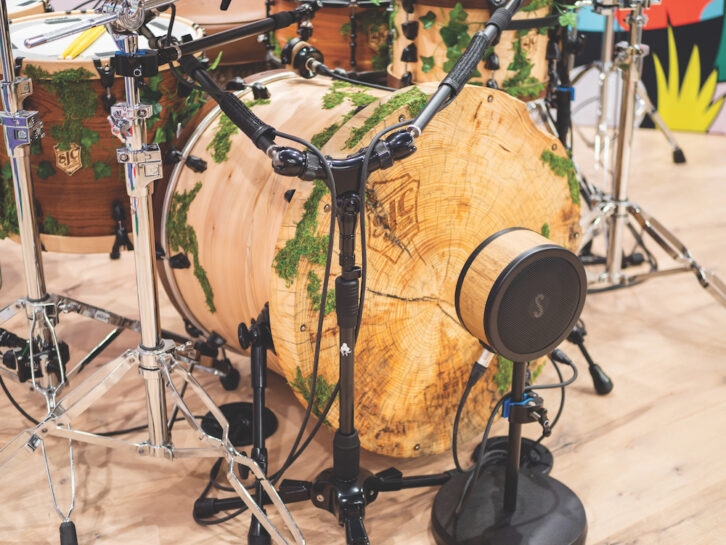
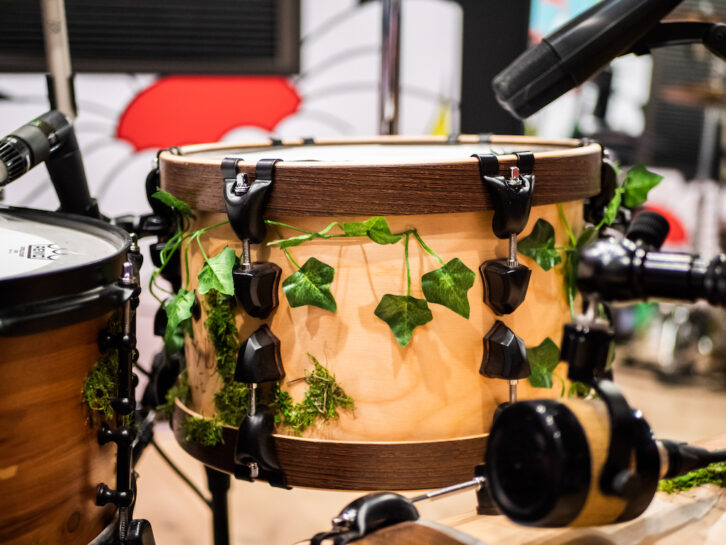
And what about those drums? Dun wanted something special for his home studio setup, so Mike Ciprari, owner of SJC Custom Drums, his longtime supplier, ran with Dun’s treehouse concept (he proposed to Ryan in a treehouse in New Zealand). The all-wood kit, with moss and leafy accents, uniquely features a completely wooden front head on the kick drum. “No joke, it actually sounds pretty solid; I was shocked,” Bechill laughs.
Bechill’s idea was to mike the drums using just two or three stands, making the most of the design flexibility and weight capacity of Triad-Orbit’s products. An Audix D6 and a Solomon Mics LoFReQ hang off one stand, he reports, with multiple Sennheiser MD 421 tom mics hanging off another. “If you were to try to do that with any other stand, it would just tip over,” he comments. “I spent $1,500 on three mic stands, but we had committed so heavily to an aesthetic that I wanted them.” The Coles overhead mics are supported by two ceiling-mounted boom arms.
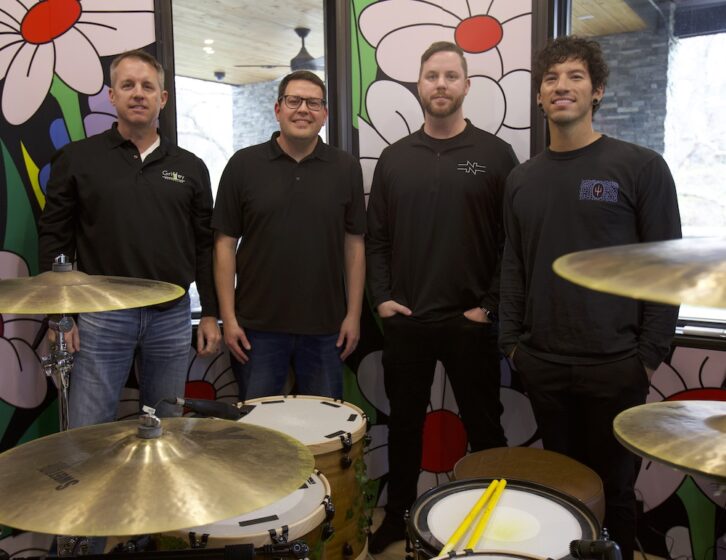
During construction, after Dun mused about what his drums might sound like in the 20-foot-high sunroom, Bechill had Griffey install a four-inch conduit so that he could run a Whirlwind 24-channel snake to a stagebox upstairs. “John [Kremple] did all the wiring with me, and it took us four hours just to get the W2 mass connect from the second floor down to the studio. I don’t know if Josh will ever actually track up there, and, if he does, if it’ll ever be used—but for some reason, in the moment, it felt like the most important thing,” he chuckles. “After that, everything else was easy.”
It seems likely that Twenty One Pilots fans will hear the results of all that hard work soon enough. Previously, while Joseph could work in his own studios, Dun had to go to a commercial room to track his drums. Now, Bechill says, “Between this studio and Tyler’s two studios, we can track and mix in these rooms—although I believe they’ll still send their sessions out to be mixed—because we have the proper environments.”
